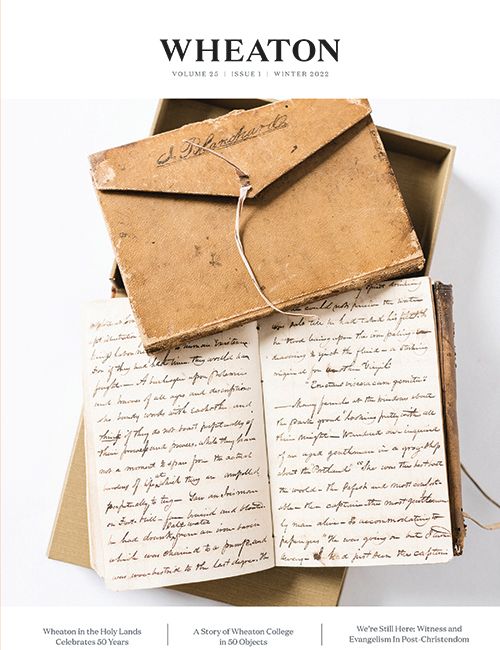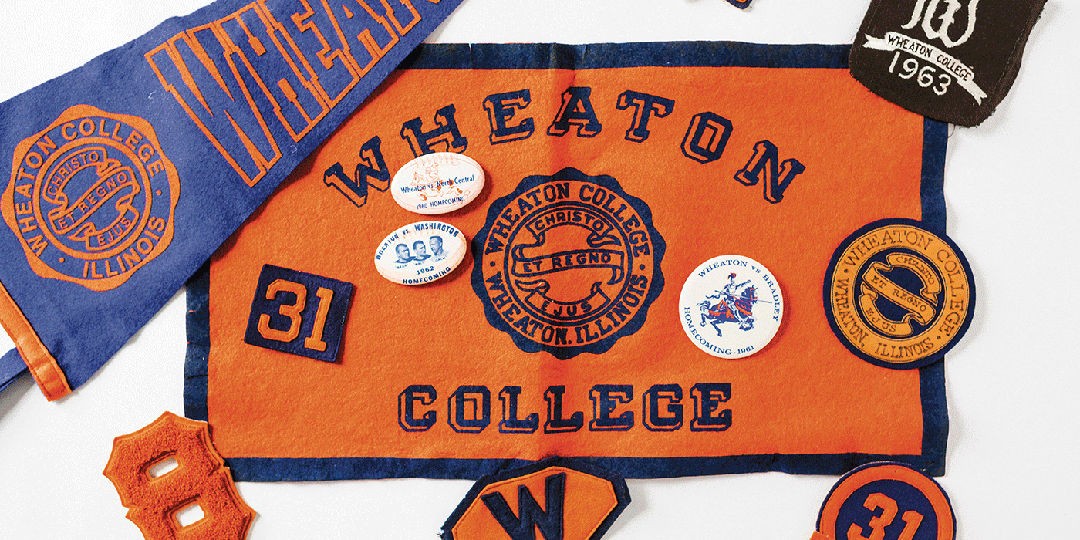Feature
A Story of Wheaton College in 50 Objects
A selection of objects from Wheaton's past
Words: Eliana Chow ’21
Photos: Tony Hughes
Editor's Note
When we conceived of this article, I thought we would have trouble identifying 50 objects. I was wrong. As it turns out, there are countless physical remnants of a bygone Wheaton that are preserved in the College’s archives, stored away in alumni attics, and living on in various places on campus. The College’s archives alone hold over a thousand collections, some containing hundreds of items. Fifty objects was oppositely impossible—the work was more about sifting and winnowing than about digging and finding. The question was less “Where will we find these objects?” and more “What objects can we justly leave out?” No doubt, some will disagree with my selections.
I wanted to find objects—materials, physical things, realia. Three-dimensional things that could be perceived with the senses. Of course, that would include papers and photographs and such. Photography seemed too easy. I guessed that papers and documents were less likely to draw interest or pique nostalgia. So, I decided that I would reject anything without some weight or substance, including documents and photographs. This helped reduce our universe of possibilities to a single solar system.
Then came the question of significance. Which of the hundreds of objects bear some meaning or representation? What is iconic? The narrator in Brian Doyle’s Martin Marten reminds me: “The fact is that there are more stories in the space of a single second, in a single square foot of dirt and air and water, than we could tell each other in a hundred years.” What is without story? Objects have subjects, and subjects verbs. All of the possible objects are pregnant with potential narratives— just imagine every Wheaton student, staff member, or professor who set foot on Blanchard lawn or rang the bell during our alma mater’s 161 years. But I had to select the objects that signified something about Wheaton as a particular institution from our particular view in this particular moment in time.
And, while there were thousands of things from which to choose, we were also limited by the reality of existence—we could only select from what remains, is remembered, and can be found. What meaningful things have passed away, were forgotten to time, or simply lost?
I confess, too, that the objects are limited by my own narrow perspective— try as I might to take into account many other ways of viewing the objects. No doubt, you will remember something that rightly ought to have been included.
So, which storied objects were most significant and applicable to the College’s overarching narrative? We have selected some that signify core values, some that point to notable moments, others that arouse nostalgia, some that represent people who helped shape Wheaton’s legacy and reputation. A few are fun items likely deemed quirky to modern perceptions, and others are just the little, easily forgotten, everyday items. None of the objects tells the whole story, and each of them supplies only a moment in the narrative.
Staff of Buswell Library Archives & Special Collections have been integral in finding these objects. Rest assured that highly skilled and careful Wheaton staff are dedicated to collecting, preserving, and making accessible materials of the College and of notable adherents to the Christian faith. My momentary venture into the task of finding and determining value of things of the past has established, for me, that this is no small task.
What objects have you saved from your Wheaton days? Dig them out, dust them off, and send a picture and description to editor@wheaton.edu.
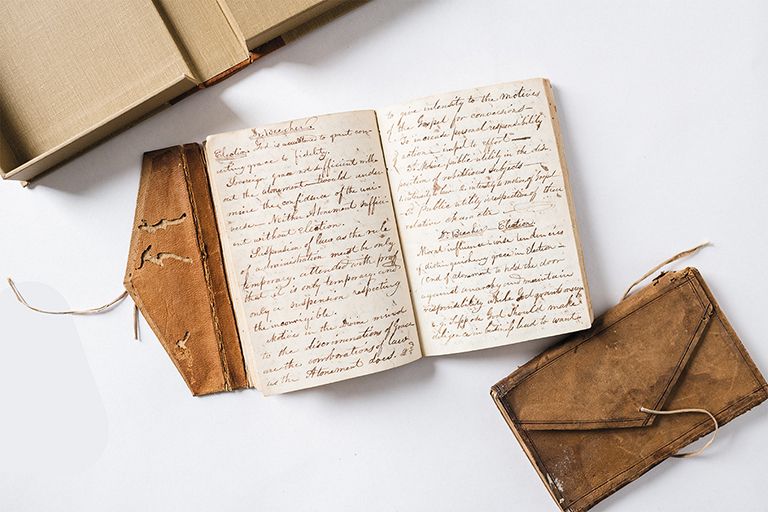
1 Jonathan Blanchard’s Personal Diaries (1834-1837)
An active pastor, abolitionist, educator, and reformer, Blanchard founded Wheaton College in 1860.
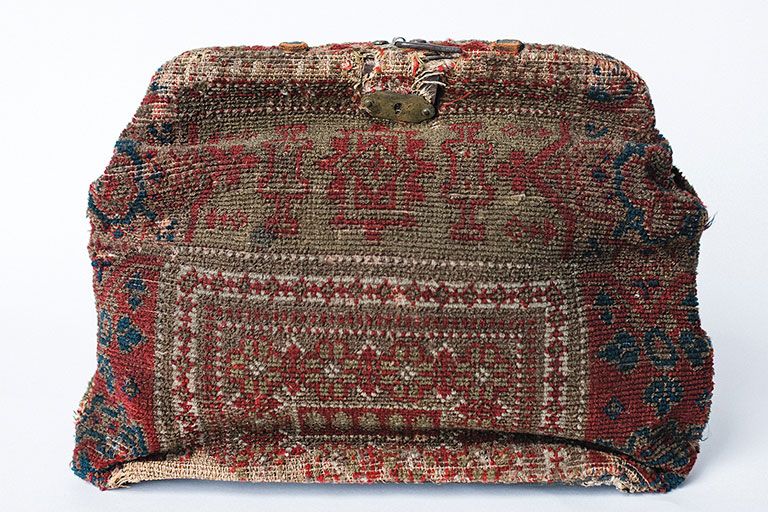
2 Jonathan Blanchard’s Carpet Bag (ca. 1850s-1860s)
As railroads proliferated in the United States in the 1840s-50s, people began traveling more than ever before. The need for cheap luggage was filled by carpet bags. By the 1860s, almost everyone from every social strata carried one of these bags, constructed from the unworn sections of old carpets and selling for $1-$2 apiece.
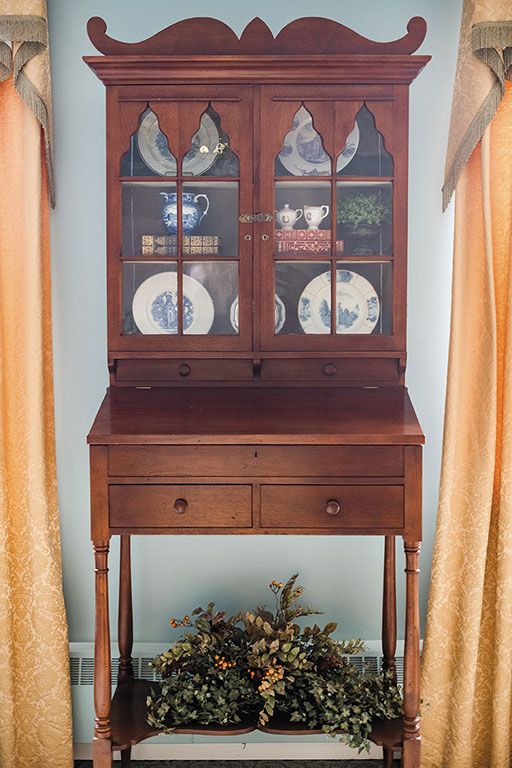
3 Jonathan Blanchard’s Writing Desk (mid-1800s)
During Jonathan Blanchard’s lifetime, before telephones came into common use and long before email and social media, handwritten letters were the primary means of communication between people separated geographically. Jonathan carried on extensive correspondence, both personal, to family members, and professional, in his roles as college president, abolitionist, and social reformer. He probably also used this desk in writing sermons, addresses, and books.
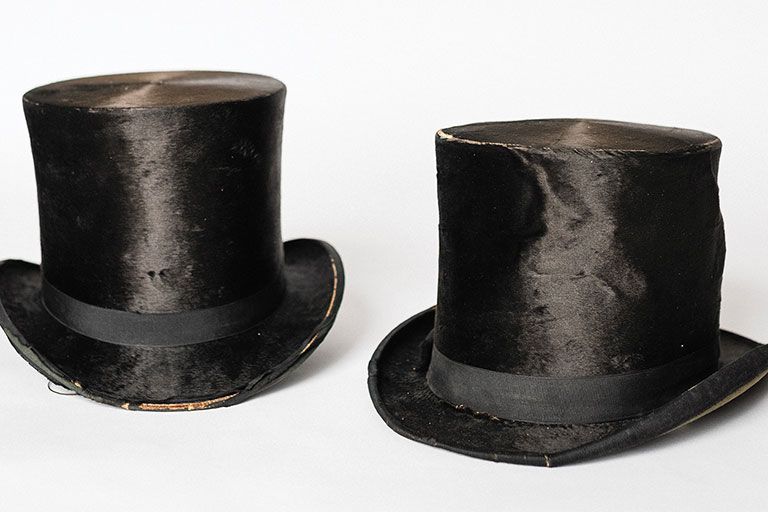
4 Top Hats of Jonathan and Charles Blanchard (ca. 1860-1900)
Top hats emerged in the late 1700s, replacing tricorne hats in popularity among urban middle and upper classes in the Western world. Originally made of felted beaver fur, by the early 1800s black silk became standard. Abraham Lincoln’s preference for the “stovepipe” style made it the most common in that era in the United States. The use of top hats began to diminish in the 1900s and after World War II they were rarely used except in high society.
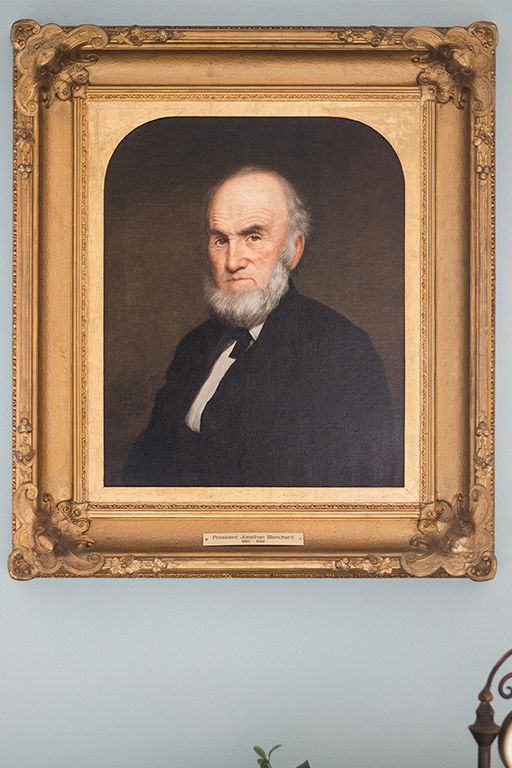
5 Portraits of Jonathan Blanchard and his Wife, Mary Bent Blanchard (1872)
Jonathan Blanchard’s portrait, painted by J. Phillips, was completed in December 1872. Information is not available about who painted Mary Bent Blanchard’s portrait, which was donated to the College by the Fischer family. These portraits are currently housed in the Heritage Room of Edman Chapel (Jonathan) and the second fl oor of Blanchard Hall (Mary).
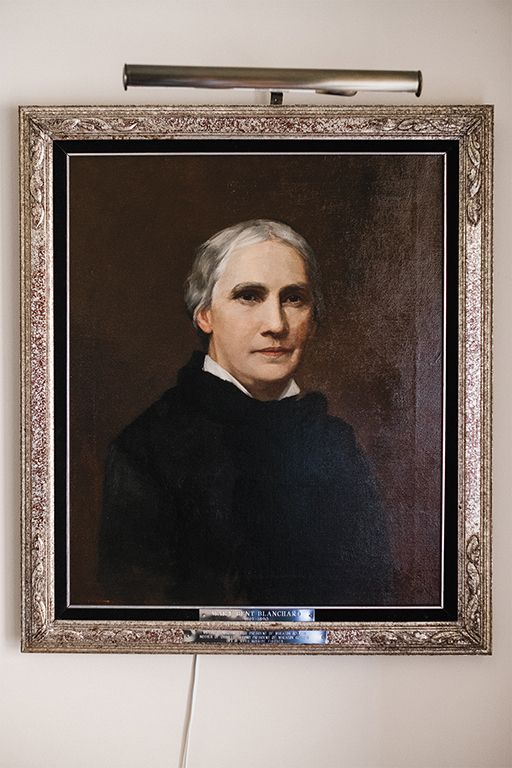
5 Portraits of Jonathan Blanchard and his Wife, Mary Bent Blanchard (1872)
Jonathan Blanchard’s portrait, painted by J. Phillips, was completed in December 1872. Information is not available about who painted Mary Bent Blanchard’s portrait, which was donated to the College by the Fischer family. These portraits are currently housed in the Heritage Room of Edman Chapel (Jonathan) and the second floor of Blanchard Hall (Mary).
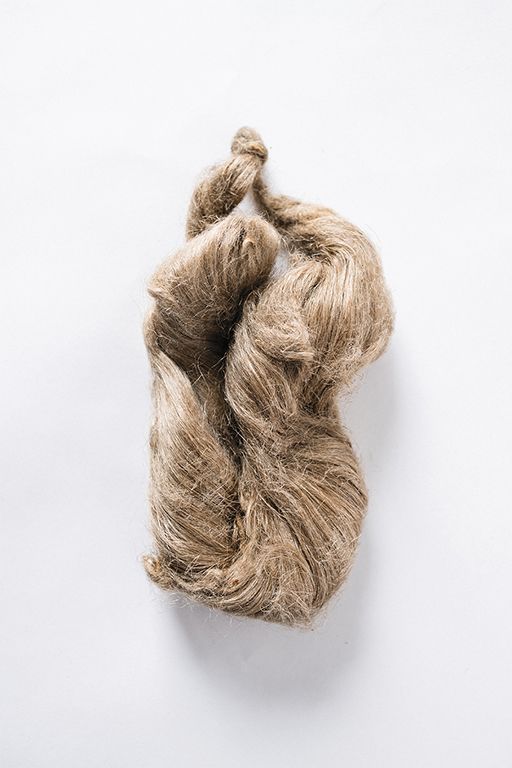
6 Lock of Julia Waters Blanchard Fischer’s Hair (ca. late-1800s)
Julia, class of 1875, was the daughter of Jonathan and Mary Blanchard. She later married Herman Augustus Fischer Sr., class of 1870. Freshman dorm, Fischer Hall, was named after Julia’s husband, and Herman A. Fischer Jr. ’03, their son.
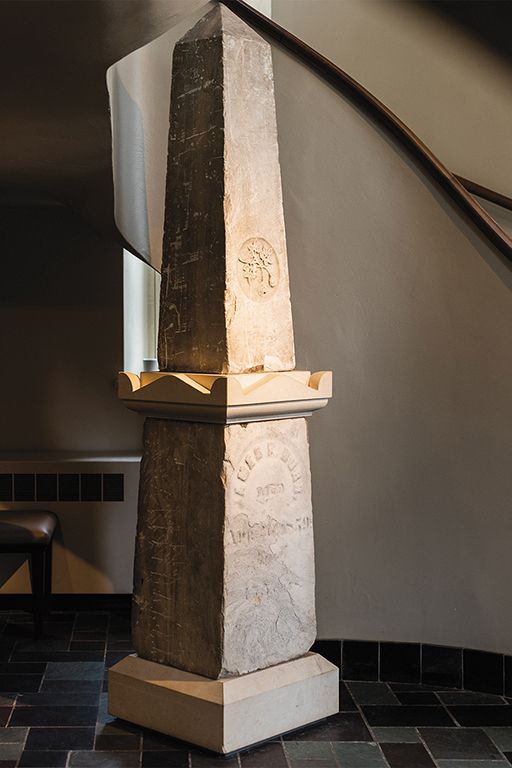
7 Burr Obelisk (mid-1800s)
During the summer of 1841, James E. Burr and two college friends were seized and jailed by slave owners for attempting to help slaves escape from Missouri to the North. The three were sentenced to 12 years of incarcerated labor, but Burr was unexpectedly freed early in 1846. Before he died in 1859, he requested to be buried at Illinois Institute (the Wesleyan Methodist school that preceded Wheaton College in a smaller Blanchard Hall), a site known for its abolitionist commitments. In 1929, the obelisk mysteriously disappeared which, considering the fl at Illinois prairie of the time, was a feat of its own. In 2012, parts of the obelisk were unearthed during a dig to place new electrical lines on campus. The pieces were authenticated by David Malone M.A. ’92, then an archivist and professor of library science at Wheaton, and the rest of the obelisk was recreated from limestone. The obelisk, including its original fragments, now stands in the lobby of Blanchard Hall.
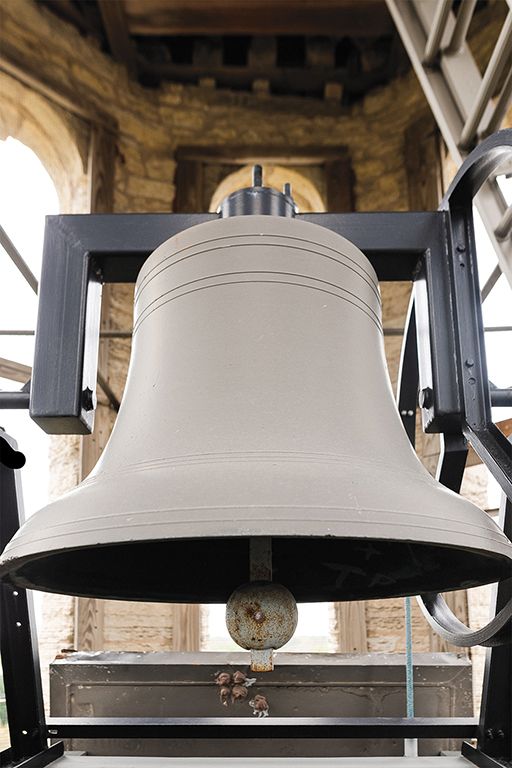
8 Blanchard Bell (1872)
The tower bell was originally rung to mark class, chapel, and meal times. (Now, the steeple bells in Edman Chapel chime to mark every quarter hour.) Although there is no sure date, as early as the 1940s, students began going “up the tower” to ring the bell as a celebratory announcement of engagements and marriages. Couples’ signatures cover the stone walls of the tower’s interior, accompanied by mementos and keepsakes left by couples to commemorate their relationships.
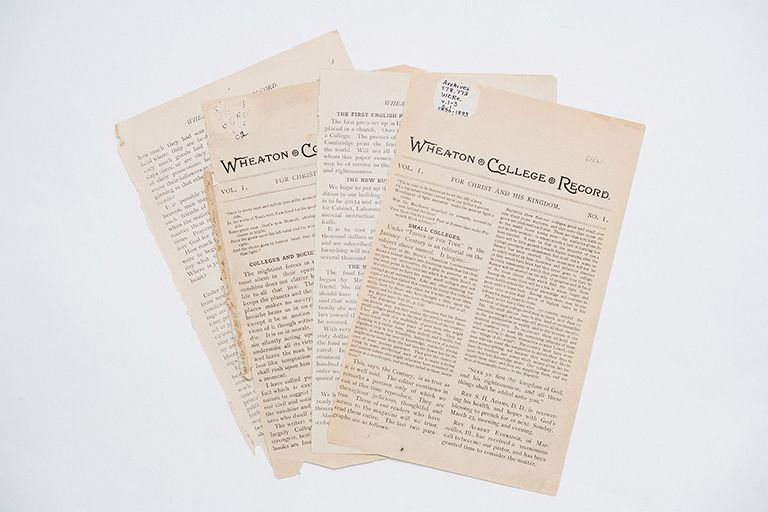
9 Wheaton College Record Vol. 1, No. 1 (1890)
Documenting news, opinions, and feature stories of the College, this weekly newspaper has been fully student-run since 1900. In the face of the COVID-19 pandemic, the print publication transitioned to a primarily online platform with special print editions.
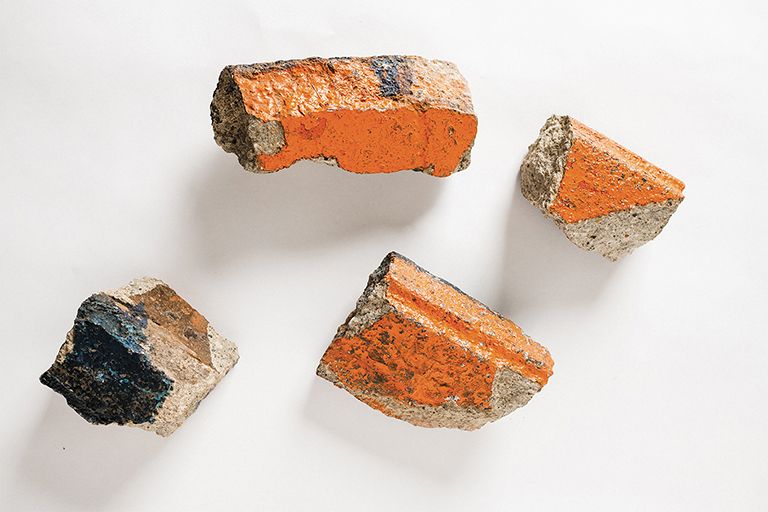
10 Pieces of the “Senior Bench” (1912)
The class of 1912 is said to have brought a large concrete slab—known as “the Bench”—to campus for the sole use of the senior classes to come. In 1948, so the story goes, the junior class “stole” the top of the Bench, and so began one of Wheaton’s oldest rivalries between juniors and seniors vying for possession of the Bench. The tradition requires the Bench to make a public appearance three times during an academic year. Once, the class of ’59 hired a helicopter to fl y the Bench over McCully Field during halftime at the Homecoming football game.
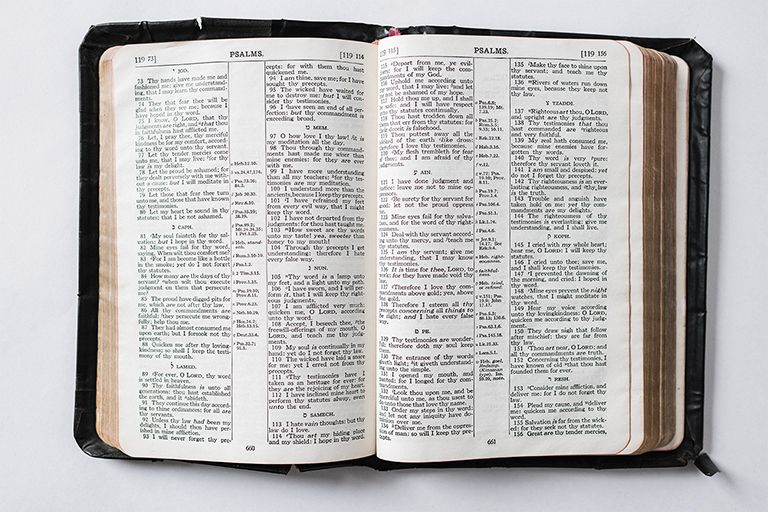
11 James Oliver Buswell’s Bible (1938)
James Oliver Buswell served as Wheaton’s third president from 1926 to 1940. During his term, the College received accreditation and launched its first graduate classes, among other advancements. Dr. Buswell’s wife, Helen, gave him this Bible, dated January 16, 1938.
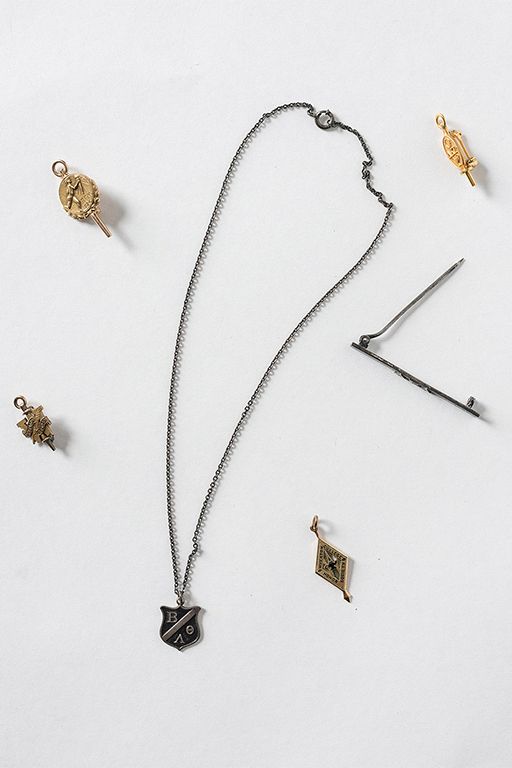
12 Literary Society Pin (1880s)
Literary Societies were the main form of student entertainment until after WWII. These Societies hosted large events on campus, consisting of public debates, speeches, and presentations. From the 1860s through the 1930s, nearly 95 percent of the Wheaton College student body belonged to one of the “Lits.”
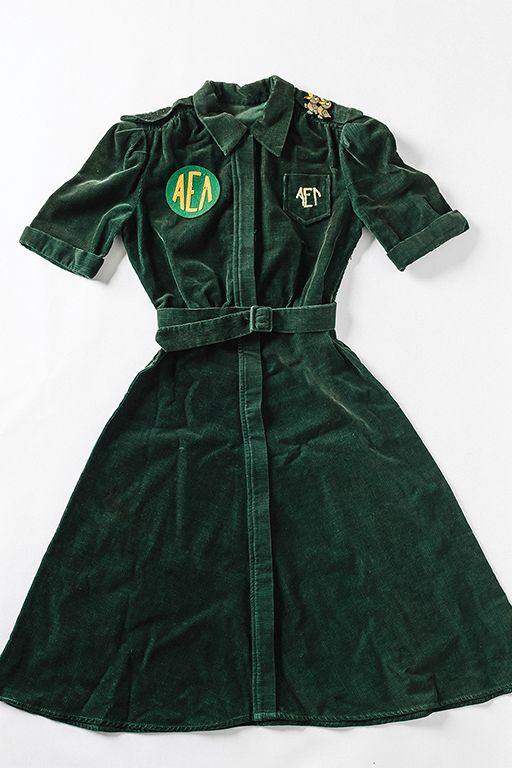
12 Green Corduroy Literary Society Dress (1940s)
Literary Society competitions were accompanied by formal banquets, giving students a chance to dress up in their fanciest attire. This dress belonged to Irene Woodrow ’43.
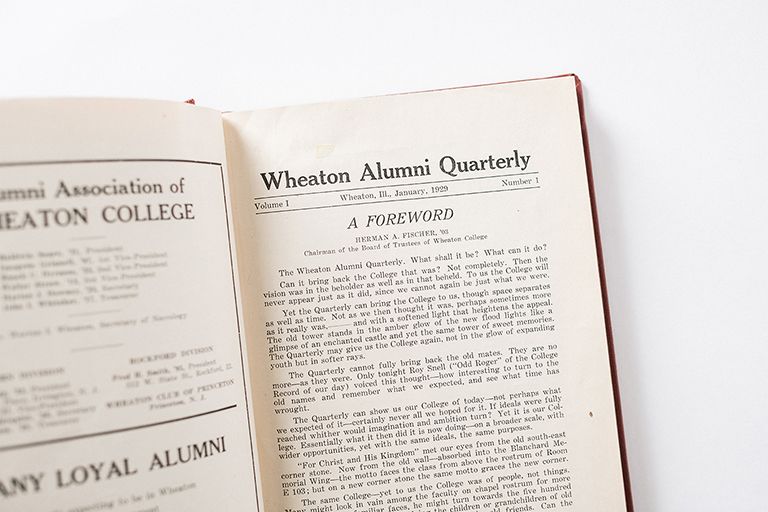
13 The First Issue of Wheaton Alumni Magazine (1920)
To describe the intended role of the then-quarterly publication, Herman A. Fischer ’03, the chairman of the Board of Trustees at the time, penned these poignant words: To us the College will never appear just as it did, since we cannot again be just what we were. Yet the Quarterly can bring the College to us, though space separates as well as time. Not as we then thought it was, perhaps sometimes more as it really was, and with a softened light that heightens the appeal. The old tower stands in the amber glow of the new fl ood lights like a glimpse of an enchanted castle and yet the same tower of sweet memories. The Quarterly may give us the College again, not in the glow of expanding youth but in softer rays.
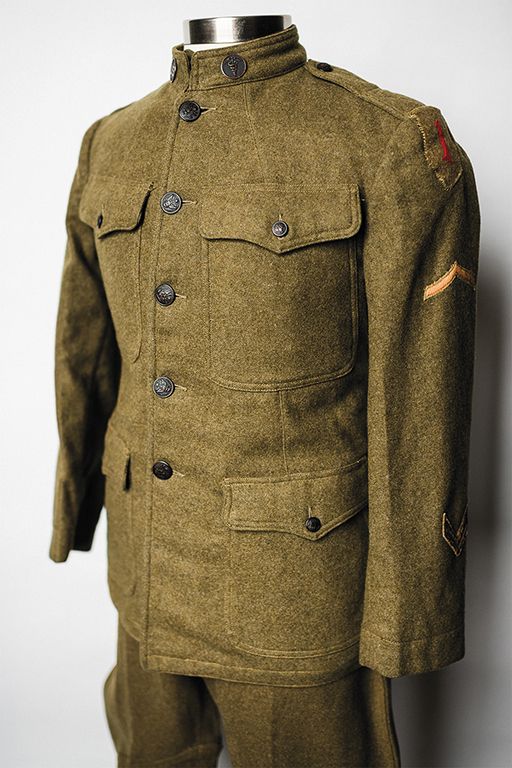
14 V. Raymond Edman’s WWI Uniform (1918)
Edman served as the fourth president of Wheaton College from 1940-65. When he returned to Wheaton as a chapel speaker on September 22, 1967, Edman suffered a fatal heart attack while preaching to the student body a sermon title “In the Presence of the King.”
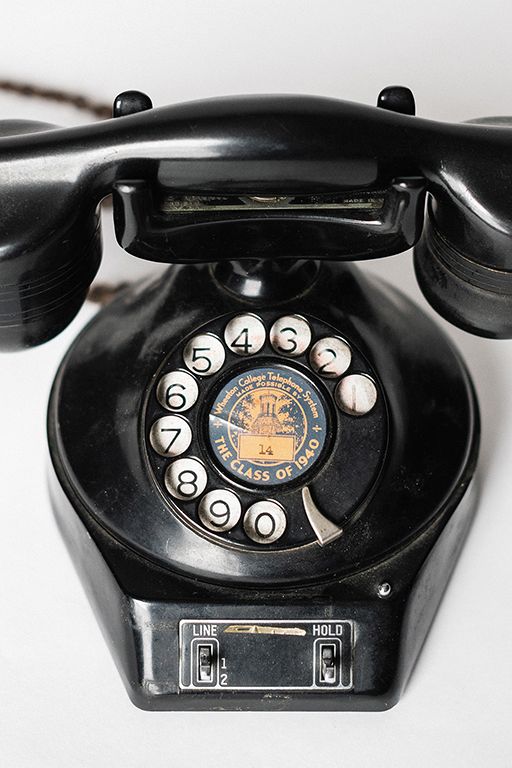
15 Edman’s Desk Telephone (ca. 1940)
The class gift of the seniors of 1940 was an interoffice telephone system. President Edman’s office telephone, shown here, was part of that purchase. In 1965, Ray Smith ’54, then editor of Telephone Engineer & Management and president of the Wheaton College Alumni Association, dialed the first TouchTone phone call at Wheaton to none other than Billy Graham.
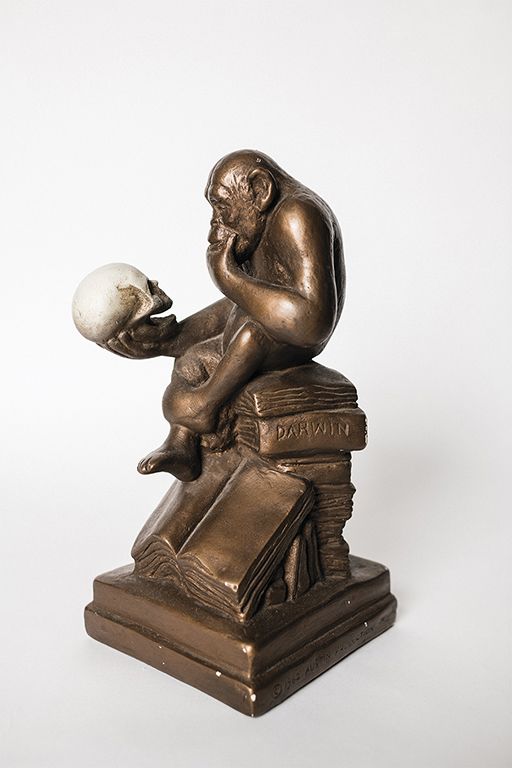
16 “Ape with Skull” (ca. 1940s-60s)
This statuette, a replica of a sculpture by Hugo Rheinhold, sat on Edman’s desk during his time as Wheaton’s president, an amusing joke given the College’s creationist views.
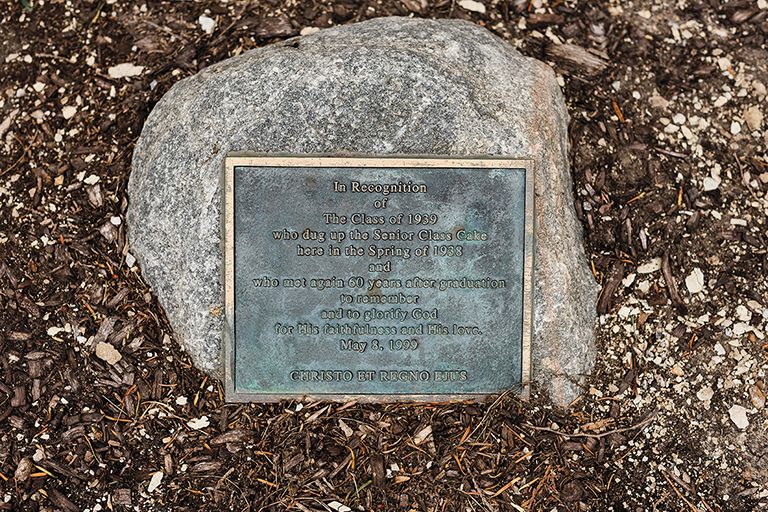
17 Senior Cake Burial Boxes (1925-43)
Per the Senior Cake tradition, which began in 1925, seniors would bury a fruit cake on the first day of the new academic year for the juniors to find before the last day of classes in May. The rivalry became so serious (with juniors digging massive holes all over campus) that the College administration had to impose limitations on where the cakes could be buried. One of many humorous discoveries: The class of 1938 unearthed the cake beneath six inches of concrete and three feet of clay.
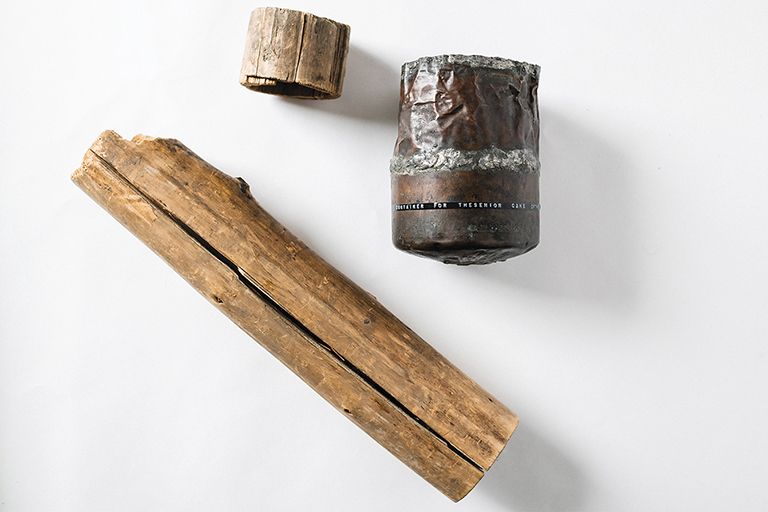
17 Senior Cake Burial Boxes (1925-43)
Per the Senior Cake tradition, which began in 1925, seniors would bury a fruit cake on the first day of the new academic year for the juniors to find before the last day of classes in May. The rivalry became so serious (with juniors digging massive holes all over campus) that the College administration had to impose limitations on where the cakes could be buried. One of many humorous discoveries: The class of 1938 unearthed the cake beneath six inches of concrete and three feet of clay.
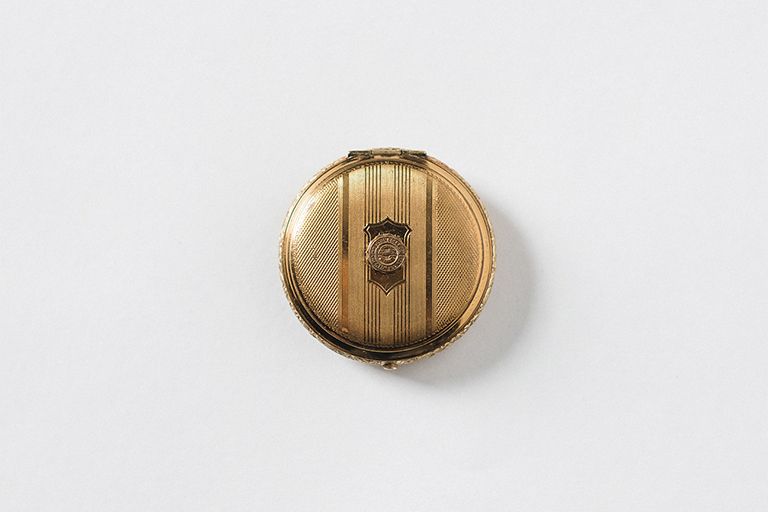
18 Brass Compact with the Wheaton Seal (1930s)
Women commonly carried powder compacts to blot their faces and preserve makeup during class and for fancy events.
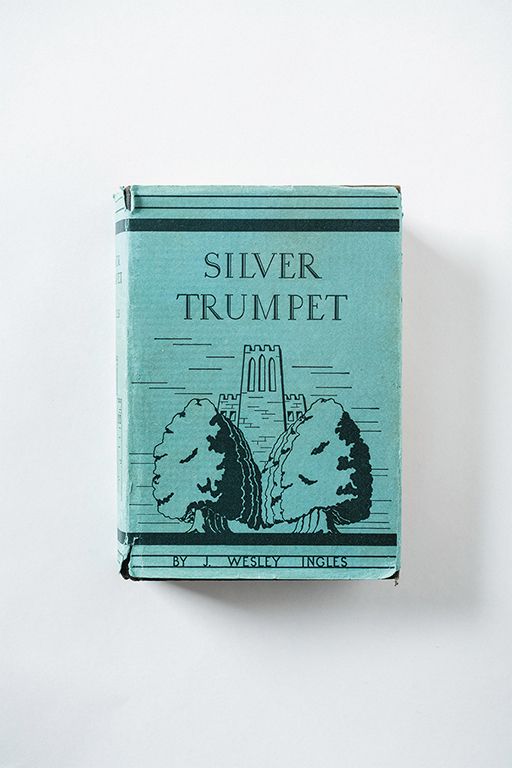
19 Silver Trumpet by J. Wesley Ingles ’26 (1930)
This fiction novel is a love story set at “Wharton College,” with a fly leaf dedication to Charles A. Blanchard. The story drew many students to Wheaton during the 1930s and 1940s because of its romanticized message about finding a spouse while attending the College.
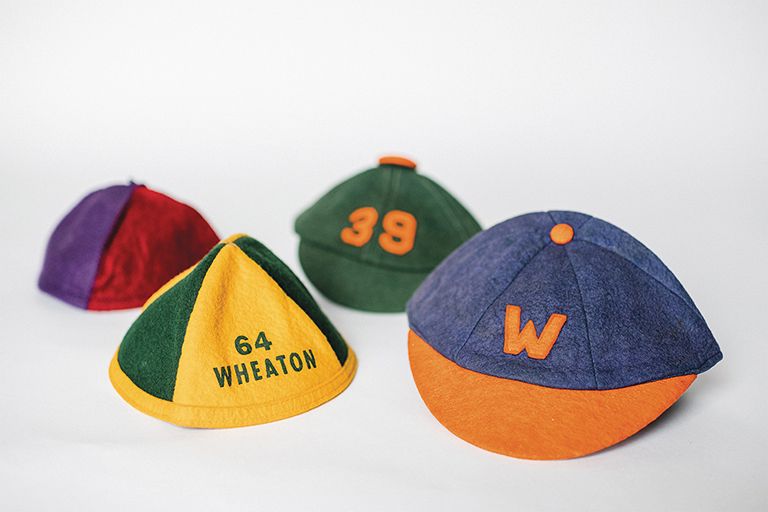
20 Dinks (1920s-50s)
From the 1920s through the 1950s, seniors and juniors were known for setting up playful pranks on new freshmen. “Dinks”—small beanie caps— identified freshmen around campus, similar to the way present-day students can identify freshmen by their lanyards, orientation t-shirts, or their tray usage in the dining hall.
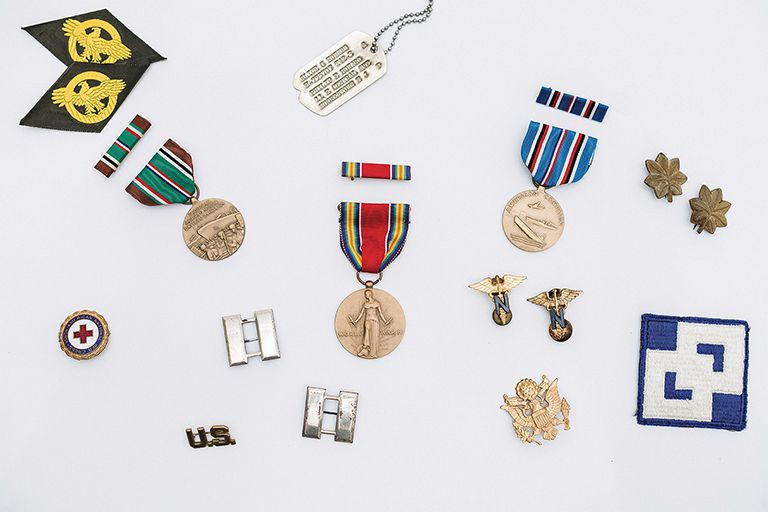
21 WWII Pins, Buttons, and Patches (1940s)
Over 1,600 students and graduates served in World War II, 39 of whom gave their lives. The Memorial Student Center, located south of Blanchard Hall, was built and dedicated in 1951 to honor these individuals. These items belonged to Alice G. Howard ’24.
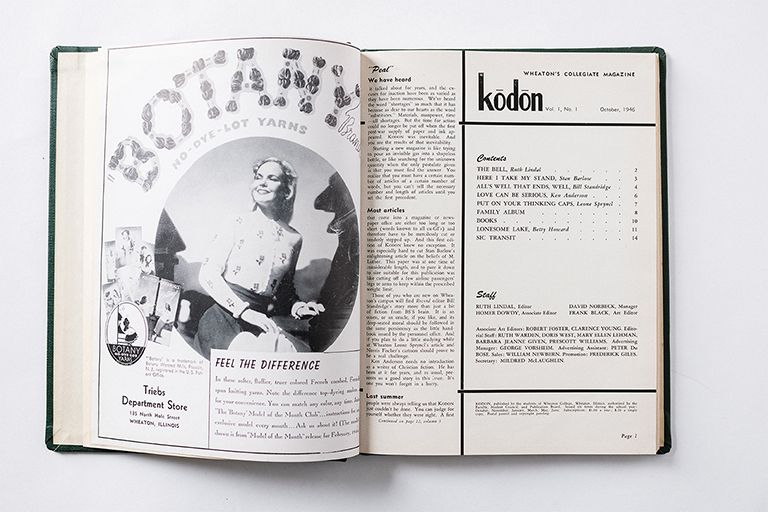
22 The First Issue of Kodon (1946)
Kodon is the College’s literary journal, publishing student artwork in a variety of written and visual genres. When the late American fi lm director Wes Craven ’63 was the editor-in-chief, the College administration suspended production of Kodon for a semester because of content that was—at the time—deemed inappropriate, including a story about interracial marriage.
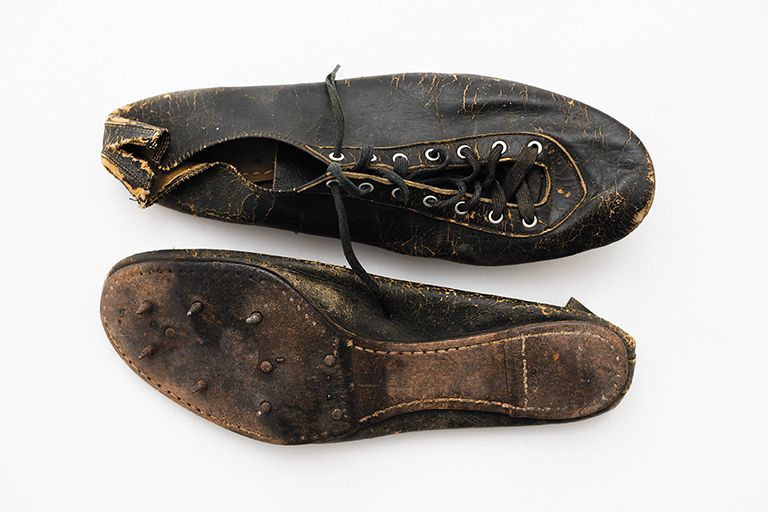
23 Running Shoes (ca. 1952)
These shoes belonged to Stuart Kortebein ’52, who wore them while running for coach Gil Dodds M.A. ’48. During his tenure as the men’s cross country and track and fi eld coach, Dodds led Wheaton to 9 Illinois cross country titles, 12 CCIW track titles, and 6 Midwest Indoor Relay Championships. He was inducted into the Wheaton Athletics Hall of Honor in 1993.
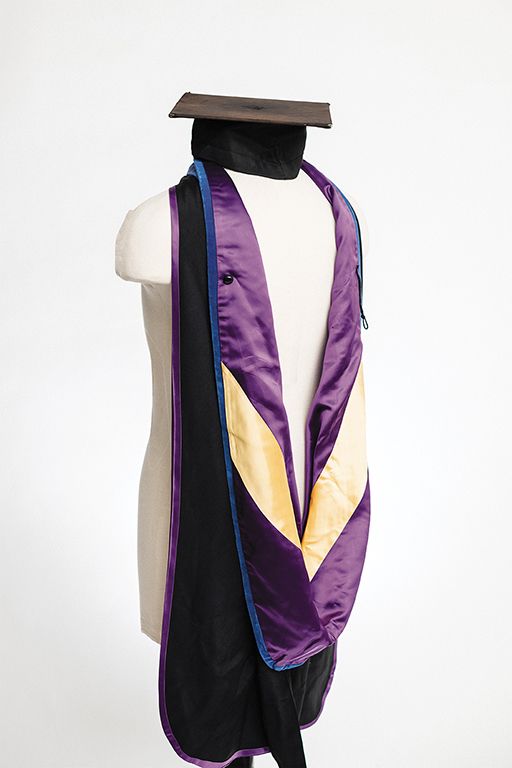
24 Arthur Holmes’ Academic Regalia (1957)
Arthur Holmes ’50, M.A. ’52 began his 43-year tenure teaching philosophy at Wheaton in 1951 while completing a master’s degree at Wheaton, and then earning a Ph.D. in philosophy from Northwestern University (1957). He persuaded the College administration to make philosophy its own department in 1967. During his time at Wheaton the number of philosophy majors increased tenfold. One of the creators of the Society of Christian Philosophers, Holmes was named Senior Teacher of the Year in 1966 and 1983, and the Chicago Tribune’s Professor of the Year with highest honors in 1994.
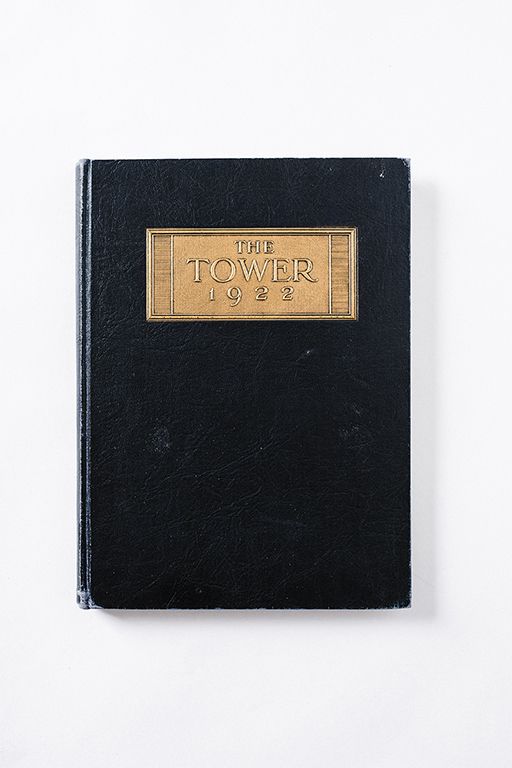
25 The Tower Yearbook (1922)
The first issue of The Tower debuted in 1922. Through the years the yearbook won many All-American awards. Due to decreasing student interest and a lack of available funding, the administration decided to end production of the College yearbook in 2016.
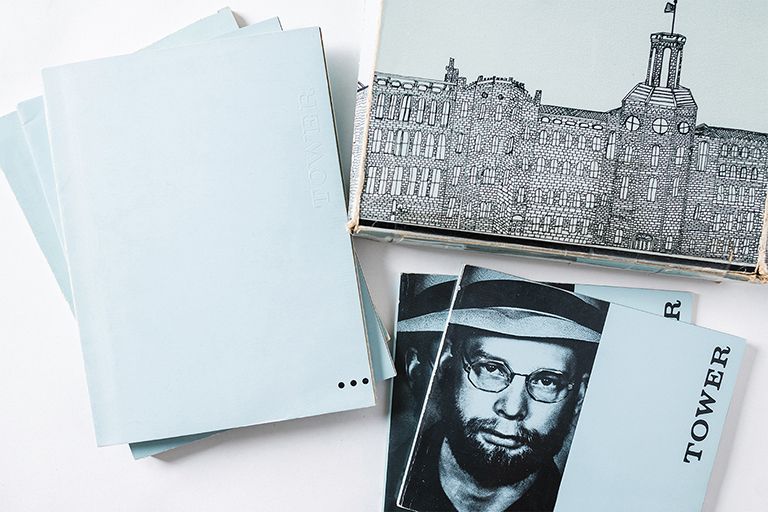
25 Cassette Tape from The Tower Yearbook (1972)
The Tower student staff jokingly included a cassette tape of philosophy professor Dr. Stuart Hackett M.A. ’47 and his band in concert with each copy of the 1972 yearbook.
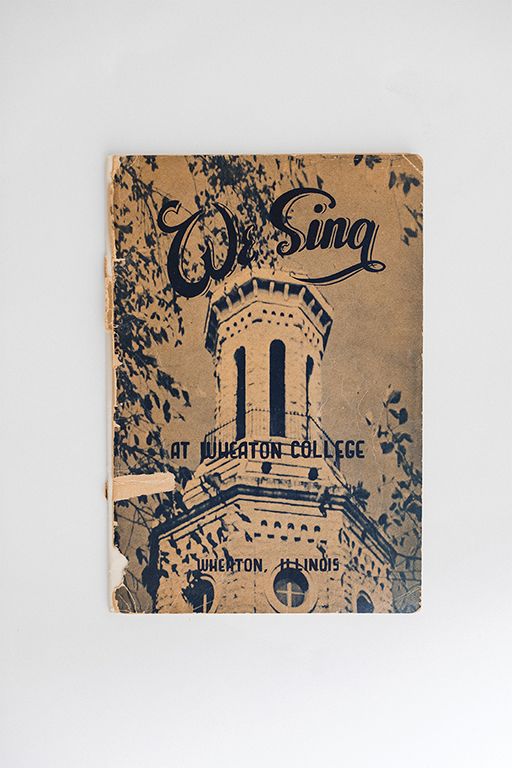
26 “We Sing” (1940s)
This student-produced hymnal was a collection of original compositions from students and faculty in the Conservatory.
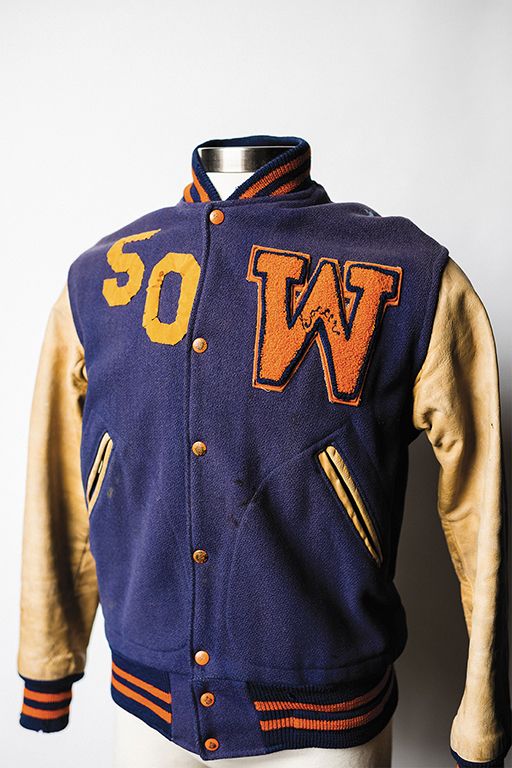
27 Letterman Jacket (1940s-60s)
These jackets, also called varsity jackets, were worn by male athletes on campus. Athletes who “lettered,” that is, were awarded a letter in a sport, would sew the letter on their jackets.
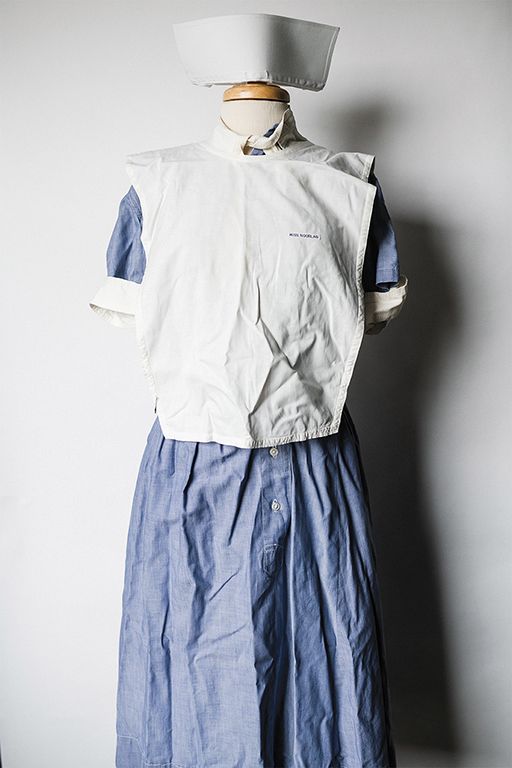
28 West Suburban Nurse’s Uniform (1940-1980s)
Wheaton and the West Suburban Hospital (now a part of Resurrection University) in Oak Park, Illinois, collaborated to off er two student nursing programs. Learning from Wheaton faculty and logging hours of experiential learning at the hospital, students could attain a diploma in nursing, optionally followed by an additional 60 hours to complete a degree in nursing education. Many program graduates went on to serve as domestic or foreign missionary nurses.
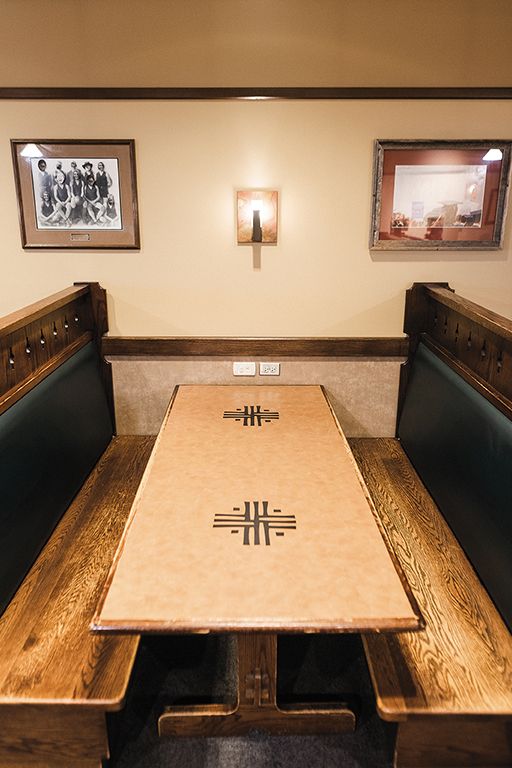
29 Original “Stupe” Booth (ca. 1950s)
Beginning as a small office supplies store run by the Student Union in the 1880s, “The Stupe” later got its name from a combination of the words “Student Union” and “Physical Education,” the then-sponsors. As the store expanded into a one-stop shop (bookstore, post office, laundry, and food and drink), it moved from Blanchard to Adams Hall, and then to the Memorial Student Center in 1951. Since 2004, “The Stupe” has been located in the lower level of the Beamer Center and acts as a student dining option run by Wheaton’s food catering services. Students can purchase burgers, salads, and an assortment of other grab-and-go foods. The booths have become a sought-after spot for “study dates.”
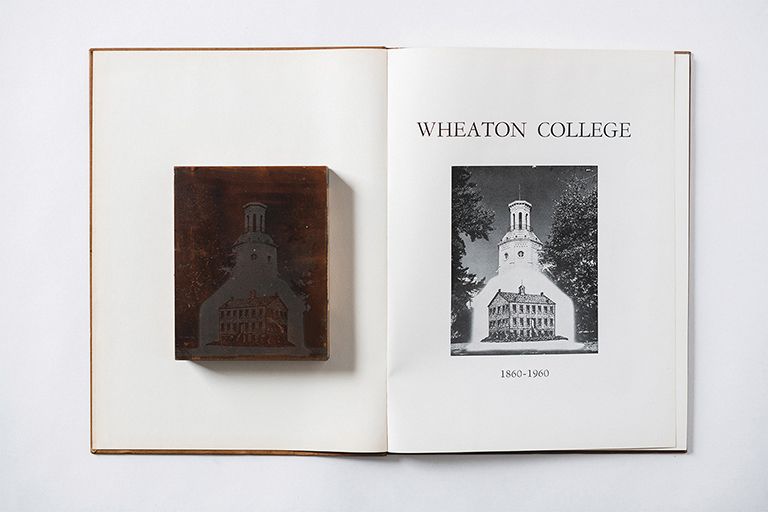
30 Copper Printing Plate (1960)
Negative images were burned onto copper blocks for use in printing books, pamphlets, and other materials. This plate depicts the original Illinois Institute as it stood in Blanchard Hall, and was used to commemorate a special centennial edition of The Tower yearbook in 1960.
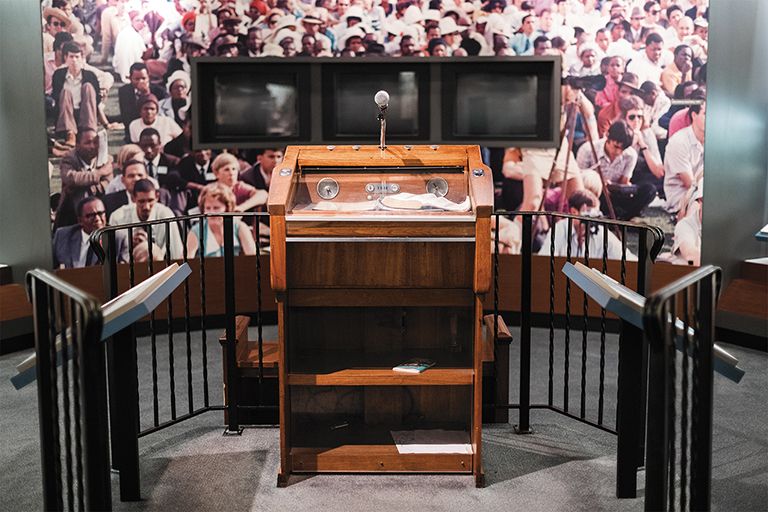
31 Billy Graham's Traveling Pulpit (1950s-60s)
The famous evangelist and preacher attended Wheaton College from 1940-43. During that time, he studied anthropology, was personally mentored by President Edman, pastored a church in Wheaton, and met his wife, Ruth Bell ’43. After graduation, Graham briefly preached in local churches and spoke at Christian conferences. In the late 1940s, he realized his call to be a full-time evangelistic speaker, and quickly garnered national attention after the media covered one of his sermons for the evangelistic campaign “Christ for Greater Los Angeles.” He proceeded to travel around the country and the globe on “crusades,” coordinating with church leaders in each location and attracting larger and larger crowds. In this way, Graham told hundreds of millions about Jesus, and his legacy continues through his written words and sermon recordings.
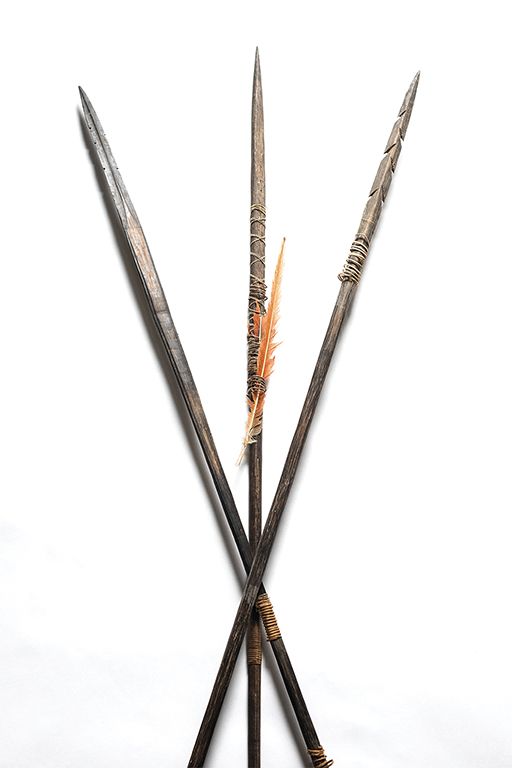
32 Waodani Spears (1950s)
Jim Elliot ’49, Ed McCully ’49, and Nate Saint ’50, along with Roger Youderian and Pete Fleming, were slain in 1956 after making contact with the Waodani in Ecuador. After Jim’s death, his widow, Elisabeth Howard Elliot Leitch Gren ’48, continued building relationships with the Waodani people. A woman named Dayuma was the first member of the community to become a Christian. She gifted these handcrafted spears to College President V. Raymond Edman, likely during her visit to Wheaton in 1958 when he baptized her at her request. Dayuma was instrumental in continuing to share the gospel with her people after American missionaries left the area until her death in 2014.
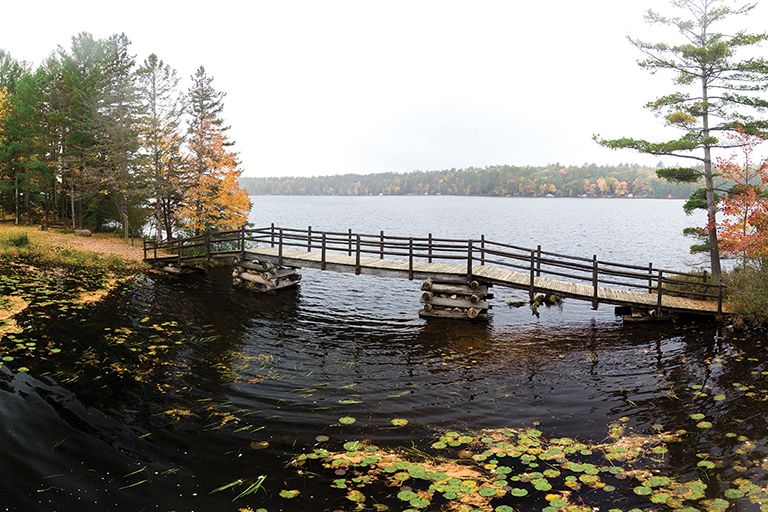
33 HoneyRock Bridge (1954)
The bridge—originally built during the summer of 1954 by Milt Seifert and his crew of engineers —is a popular location for send-off s, conversations, star-gazing, and marriage proposals at the College’s outdoor wilderness site, HoneyRock Center for Leadership Development, founded by Harvey ’34 and Dorothy McDonald Chrouser ’34. The bridge is the portal to Cathedral Pines, a location known among HoneyRockers to be a truly sacred place apart.
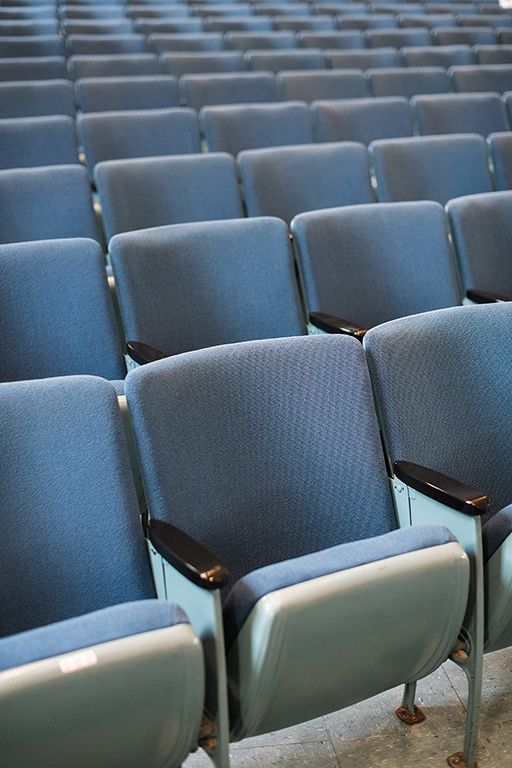
34 Edman Chapel Chair (1960)
Since May 1960, Edman Chapel has hosted weekly chapel services, performing arts recitals, conferences, talks and lectures, and nearly 60 Commencement services. The auditorium seats around 2,500 people and was built when the student body outgrew Pierce Chapel, the previous location for chapel services and performances.
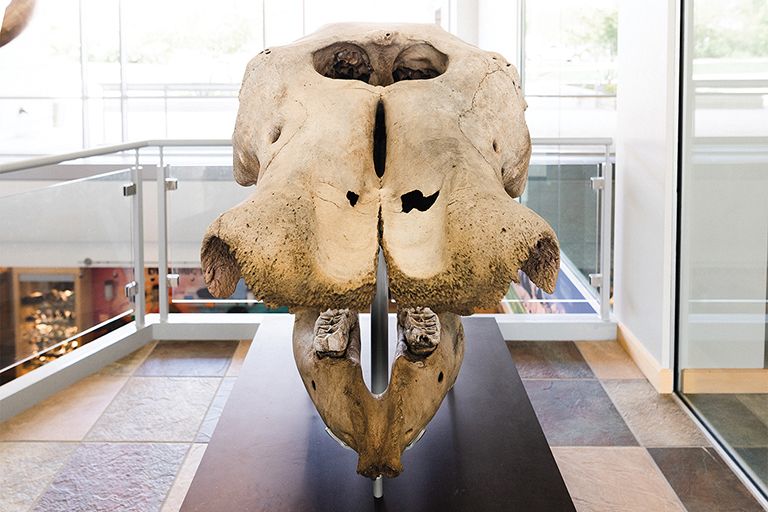
35 Perry the Mastodon (1963)
In 1963, during a dig to construct a man-made lake, an approximately 13,500-year-old mastodon skeleton was discovered on the Glen Ellyn property of Judge Joseph Sam Perry. Wheaton geology professor Dr. Douglas Block ’43 was responsible for leading the excavation, and 55 percent of the total skeleton was uncovered. For the next 11 years, Dr. Donald C. Boardman ’38 (then chair of the geology department) headed the restoration project to preserve the bones, and the Perry Mastodon Exhibit was officially dedicated in 1975. Legend has it that students informally coined the skeleton “Bonapart” for a time, a pun on the descriptor “bone apart.” In 2010 the Perry Mastodon Exhibit moved from Armerding Hall to the newly constructed Meyer Science Center.
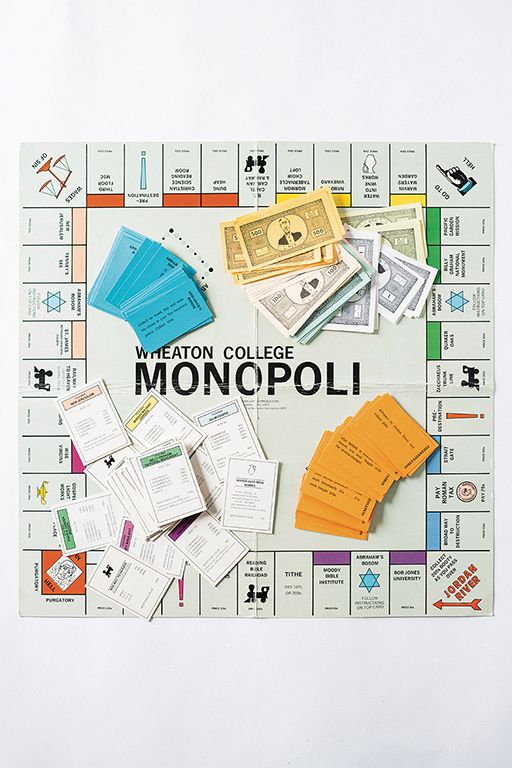
36 “Wheaton College Monopoli” Board and Pieces (1972)
In 1972, the student editors of Kodon and The Tower created a Wheaton spoof of the classic board game and printed off a copy for each Wheaton student. After the threat of a lawsuit from Parker Brothers, President Armerding ordered all “Wheaton College Monopoli” boards to be burned. Dr. Henry W. Nelson HON found this copy among his belongings in 1989 while he was serving as Vice President of Student Development.
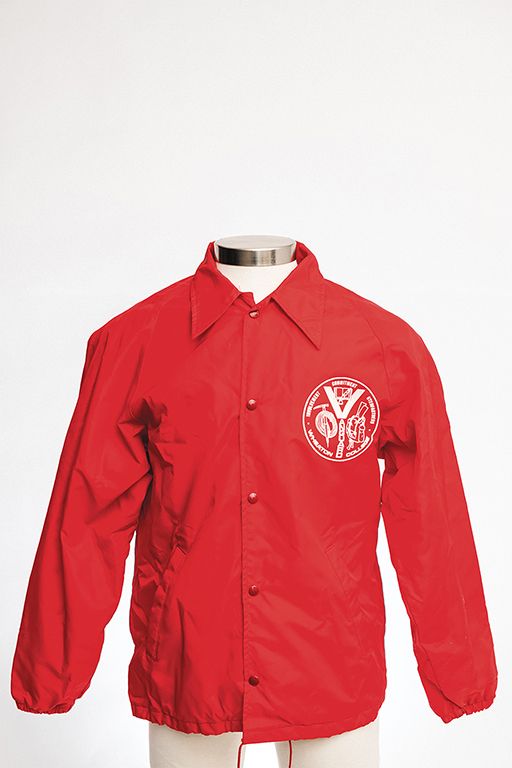
37 HoneyRock Vanguard Jacket (1970s)
Wheaton’s college transition experience at HoneyRock, Vanguard, was founded in 1969. Bud Williams M.A. ’66 developed the first program at the encouragement of Harvey Chrouser ’34. Women were first admitted in 1974, and the name changed to High Road in 1981. Now called Wheaton Passage, the program helps build spiritual character, faith, and resilience in its participants and serves as a rite of passage into college.
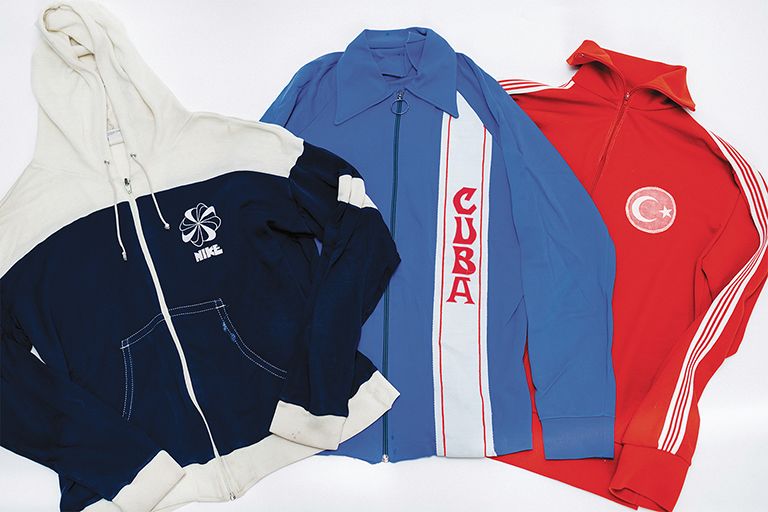
38 Bubba Church Sports Ministry Souvenirs (1970s-80s)
Don “Bubba” Church ’57, who served on the faculty of Wheaton and as a coach from 1958 until 1997, was passionate about sharing the gospel and encouraging Christians around the world. He used track and field as a means of doing this, organizing sports ministry trips to Mexico, Africa, and Eastern Europe. These items, belonging to Ted Carlson ’81, came from his trips with Coach Church in 1978 and 1983 to Romania, Czechoslovakia, Hungary, Yugoslavia, and Poland. Don’s vision and influence continue today through a summer study program for Eastern European pastors, the Faculty Missions Project, and the ministry trips that Wheaton sports teams take each year.
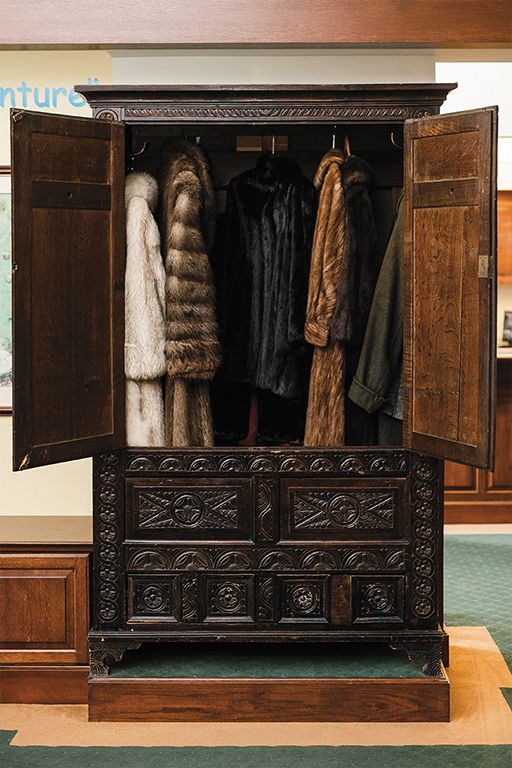
39 The C. S. Lewis Family Wardrobe (1880s/1973)
Dr. Clyde S. Kilby HON, an influential professor and director in the English department, began corresponding with C. S. Lewis in the 1950s. Thus began a personal interest in collecting various letters and papers from his favorite British authors, the collection which eventually became the Marion E. Wade Center. When Lewis died, the family gifted Dr. Kilby with several of Lewis’s personal items because of their friendship. The College purchased at an auction this piece, which had inspired Lewis to write The Lion, the Witch, and the Wardrobe. The wardrobe was built in the 1880s by Lewis’s paternal grandfather, and came to Wheaton in 1973. Now the Wade Center also houses J. R. R. Tolkien’s writing desk and over 15,000 Lewis, Tolkien, Owen Barfield, G. K. Chesterton, George MacDonald, Dorothy L. Sayers, and Charles Williams manuscripts.
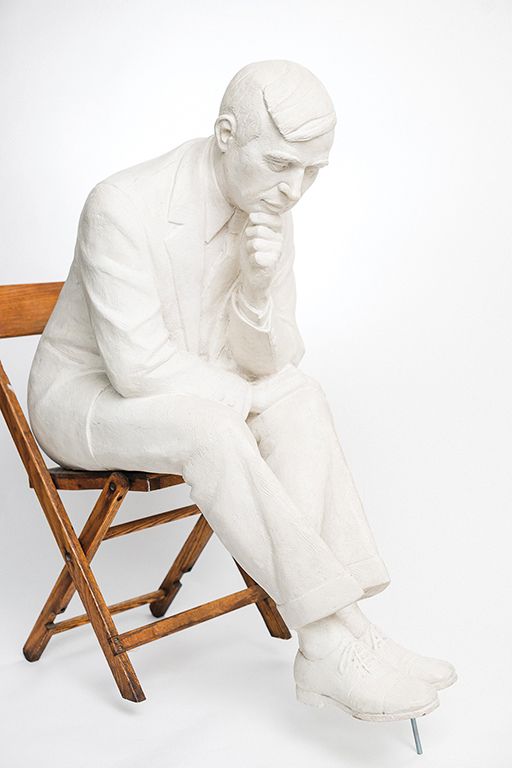
40 BGC Statues (1980)
The original statue displayed two figures, representing a counseling scenario, and were longtime fixtures in the Billy Graham Center Museum, dating to its opening in 1980. After a series of pranks and thefts—leaving one of the figures alone for posterity—the statue was removed from display around 2008.
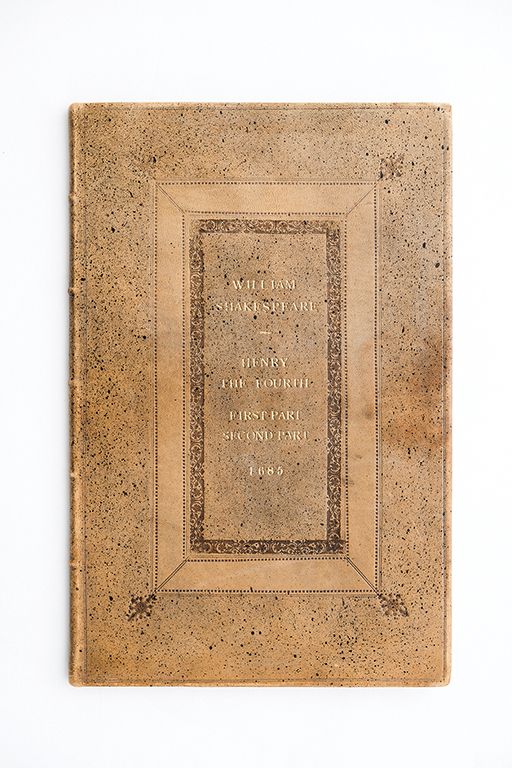
41 Beatrice Batson’s Shakespeare Folio (1600s/1990)
Beatrice Batson M.A. ’47 taught in Wheaton’s English department for 33 years, serving as chair from 1973-87. She had a rich impact on the department’s growth, and is credited with bringing many famous authors to speak on campus, including Madeleine L’Engle and Frederick Buechner. Among English majors, however, she is best known for her love of Shakespeare’s work, and this collection established in honor of her retirement contains many unique items such as a leather-bound Fourth Folio of Henry IV, Part I and II (London, 1685) and two facsimiles of the First Folio (1623).
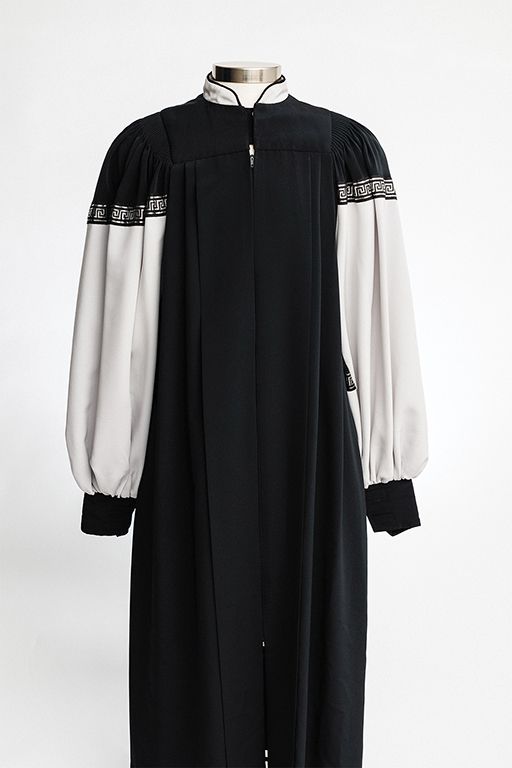
42 Gospel Choir Gown (ca. 1990s)
Organized in 1986, the Wheaton College Gospel Choir is committed to sharing worship of the Lord through Black gospel music. A culturally diverse group open to all interested students, the Gospel Choir has traveled from Chicago to South Korea and numerous places in between, evangelizing through music.
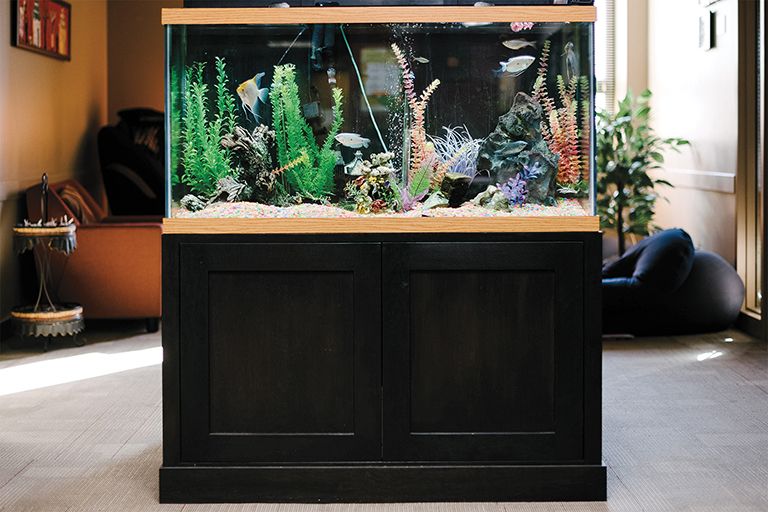
43 Rodney Sisco’s Fish Tank (ca. 1990s)
Rodney Sisco ’84 dedicated 34 years to serving Wheaton College through his commitment to unity within diversity across all facets of campus. After graduating in 1984, he worked in the Admissions Office before becoming the director of the Office of Multicultural Development in 1988, where he served until his passing on December 30, 2018. As director, Sisco led eff orts to make Wheaton a more welcoming space for students of color, as well as to facilitate fruitful conversations between those who come from vastly different life experiences. To Rodney, the different types of aquatic life in the fish tank were a reminder that the Lord is the author of diversity. The Rodney Sisco Multicultural Resources Library, to be dedicated in his honor in spring 2022, is housed in a custom-built bookcase surrounding the fish tank.
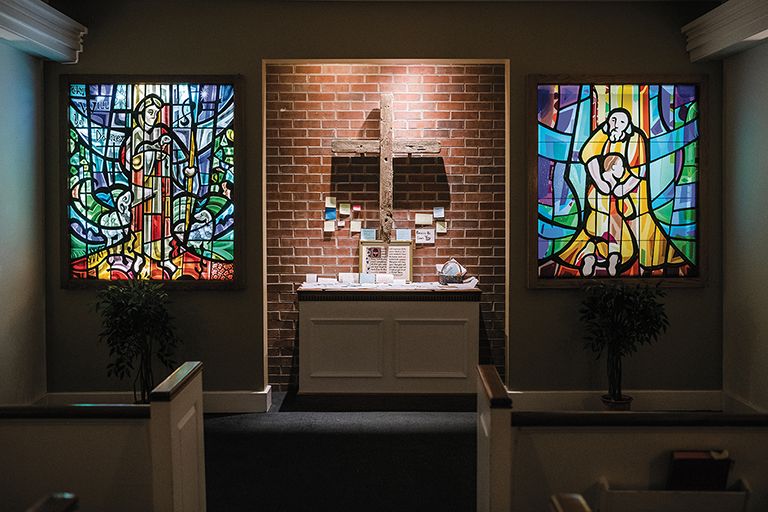
44 Gold Star Chapel (2004)
First located in the Memorial Student Center, and now tucked away in a corner of Lower Beamer, the chapel is a quiet place set aside for student prayer, worship, and meditation, whether alone or in fellowship with others. The chapel is named after a WWII tradition in which families owned flags with blue stars for family members serving in the military, and gold stars for family members who had lost their lives in the War. Wheaton kept one such fl ag in honor of its students, alumni, and faculty who served in the military during WWII.
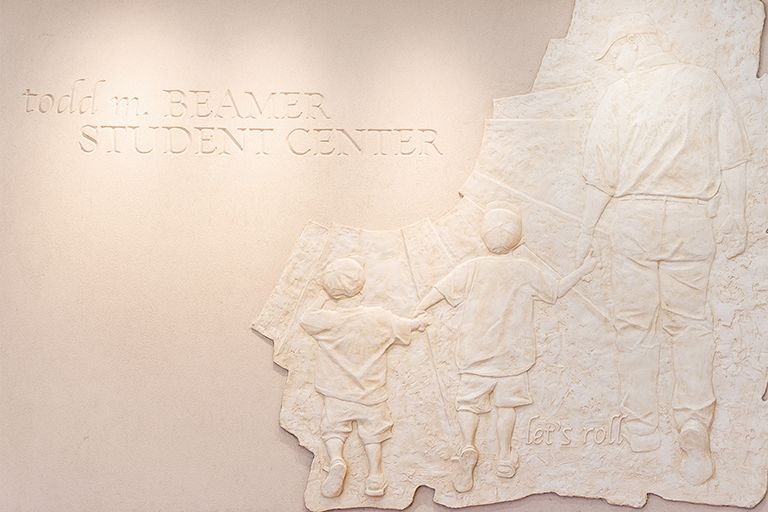
45 Bas-Relief Dedicated to Todd Beamer ’91 (2004)
Beamer and two other alumni, Jeffrey Mladenik M.A. ’95 and Jason Oswald ’95, died in the terror attacks on September 11, 2001. Mladenik was on American Airlines Flight 11, which members of al-Qaeda hijacked and crashed into the North Tower of the World Trade Center, where Oswald worked. Forty minutes into Beamer’s trip on United Flight 93, other members of the al-Qaeda group hijacked that plane. Beamer and several others fought to take control of the cockpit, leading the plane to crash in southwestern Pennsylvania, thwarting the hijackers’ plans to fl y the plane into a target in Washington, D.C. Prior to the crash, Beamer recited the Lord’s Prayer and Psalm 23 with the Airfone supervisor to whom he had been relaying details as the hijacking unfolded. To commemorate his courage and faith, the newly built Todd M. Beamer Student Center was dedicated in 2004, replacing the Memorial Student Center as the main hub for student activities and dining.
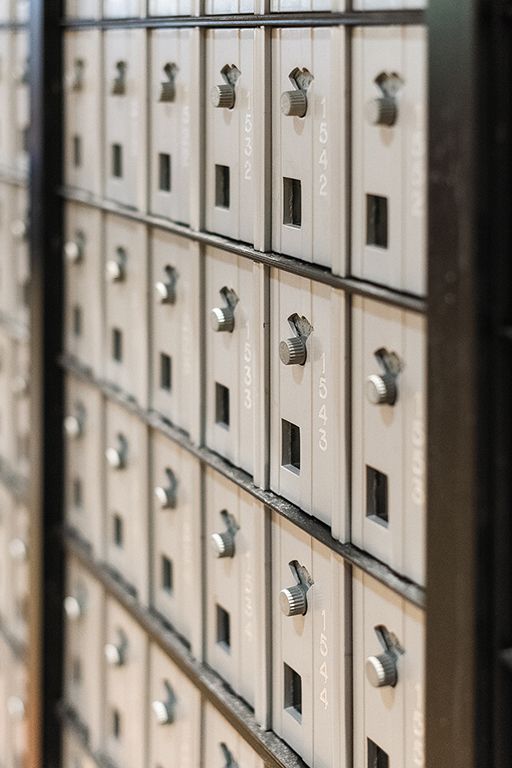
46 CPO Box (2004)
Mailboxes were installed in Blanchard Hall in 1928. Previously, students had to wait outdoors to receive their mail directly from the postman. The College Post Office made several moves before its current location in the lower level of the Todd M. Beamer Student Center.

47 Stertorous “Tor” Thunder, the College’s Athletics Mascot (2011)
In 1927, students began informally calling their sports teams the “Crusaders,” but after 73 years, the name and mascot were removed due to being historical symbols unrepresentative of Wheaton’s values. Wheaton athletics became officially known as the Wheaton “Thunder” in 2000, accompanied by the boisterous cheer, “roll Thunder.” Stertorous, or Tor, introduced in 2011, is the largest mascot in the NCAA, weighing 90 pounds and requiring two people inside.
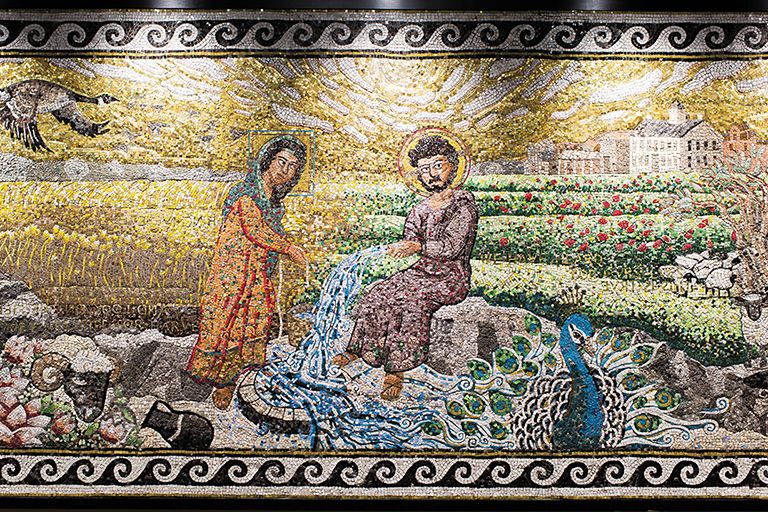
48 The Luminous One (2017)
This mosaic—which was commissioned by the President’s Art Commission—was designed by Professor Jeremy Botts and constructed by students under the direction of Professor Leah Samuelson. The piece depicts the encounter between a Samaritan woman and Jesus at Jacob’s well. The work is displayed at the entryway to Barrows Auditorium in Billy Graham Hall, and it embodies all disciplines studied in the Wheaton College Graduate School. Made with over 63,000 hand-cut tesserae (including pieces donated by the Department of Geology, faculty, staff , and alumni), the mosaic incorporates visual elements from ancient and classical western eras, early Christian art under the rule of Justinian, the Italian Renaissance, West Bank landscape, Midwest America landscape, Mennonite symbols, and recognizable places on Wheaton’s campus.
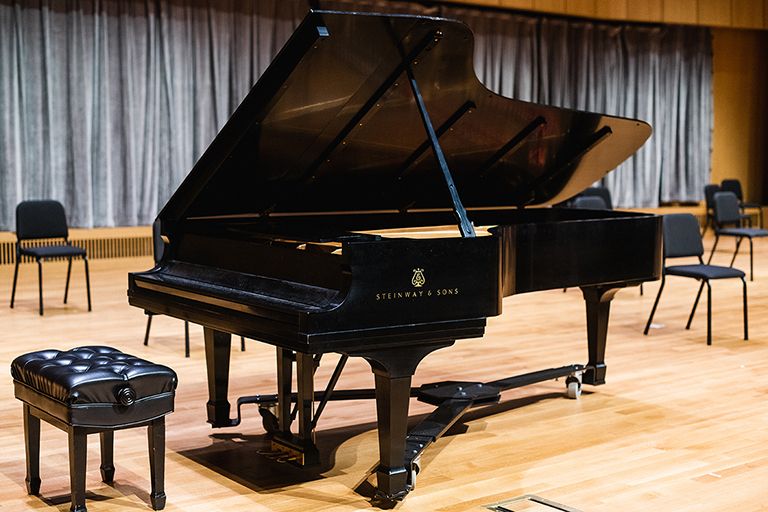
49 Krem Steinway Concert Grand Piano (2019)
Originally in the home of George ’63 and Ludene Hendricks Krem ’66 since 2004, the couple generously gifted this grand piano to the Wheaton College Conservatory of Music in 2019. The instrument has since taken up residence in the Armerding Concert Hall. The Conservatory currently has over 100 pianos in its possession.
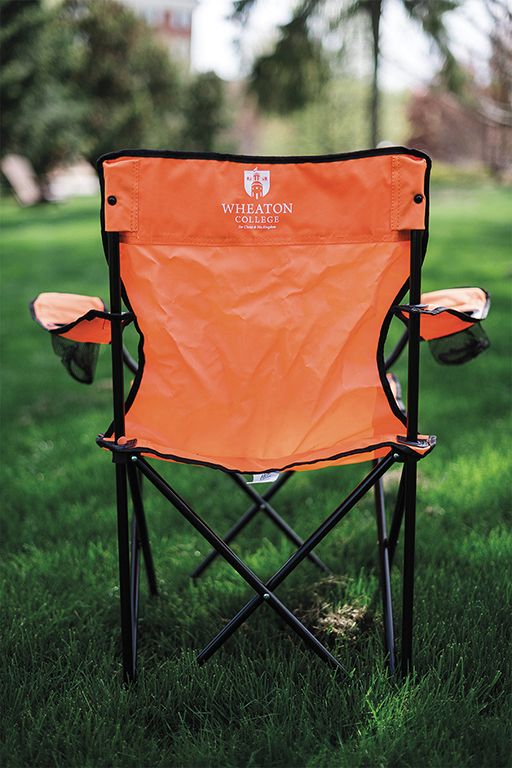
50 Foldable Camp Chair (2020)
When the College reopened its campus to students during the COVID-19 pandemic, they gifted orange chairs to every new student to encourage safe outdoor hangouts, dining, and studying.
